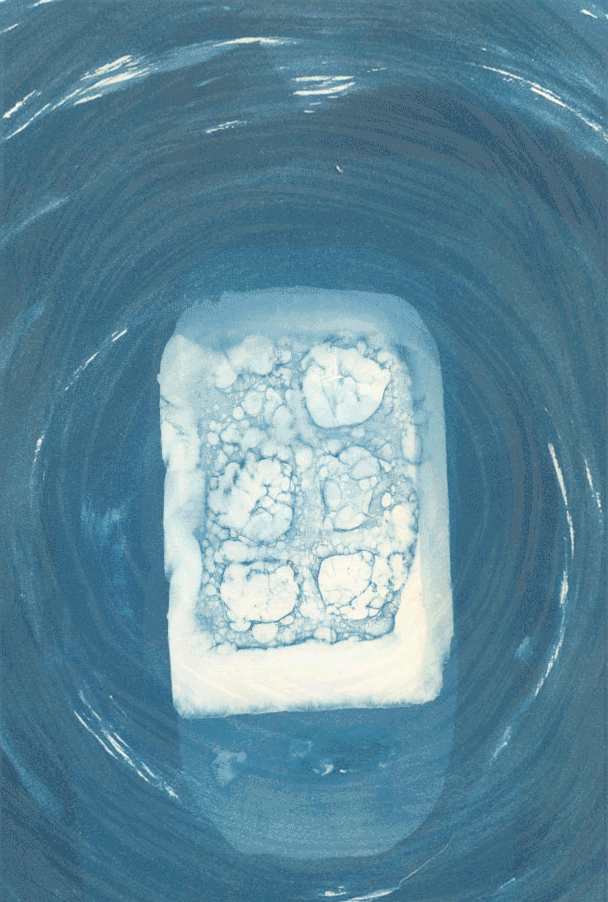
Carmina Miana

Artist Statement
Blue Print utilizes a brick recovered from the grounds of the former Lakeshore Psychiatric Hospital to explore the deinstitutionalization of mental health care. Multiple cyanotype prints (collated into a GIF) depict the transformation of the opaque brick into a translucent resin duplicate, symbolizing the shift from an institutional model of mental health care towards a transparent, community-based model. The work is inspired by traditional applications of cyanotypes, which were historically used for architectural drawing (i.e., blueprinting) and documenting botanical specimens. Blue Print emphasizes the importance of critically (re)evaluating therapeutic spaces to ensure efficacy and accessibility.
Blue Print, 2021
Curatorial Statement
Carmina Miana’s piece serves as an introduction to the themes raised by The Aesthetics of Mental Health. Her work touches on essential historical elements that are at the core of this show. Her use of a brick found on the Lakeshore Grounds references the built structures of the former Lakeshore Psychiatric Hospital, buildings that represent both the aesthetic of medical ideals of the nineteenth century as well as the paradoxes that define the history of institutionalization. The institution was constructed according to the tenets of “moral treatment,” a philosophy that emphasized the importance of one’s environmental settings and activities in mental health care; and yet was likewise a site of often long-term confinement for those who found themselves admitted as patients.
The artist’s choice of using cyanotype photography is inspired. Cyanotype was originally developed as a more economical form of photography - the method results in rich blue tones within the produced image. In colour research, blue tones have been found to produce a calming effect and have even been adopted in contemporary mental health spaces (e.g., Collean et al., 2013). Miana’s cyanotype thus encapsulates the link between historical and contemporary manners of treatment that this exhibition seeks to highlight.
Reference
Connellan, K., Gaardboe, M., Riggs, D., Due, C., Reinschmidt, A., & Mustillo, L. (2013). Stressed spaces: Mental health and architecture. HERD, 6(4), 127-168. Doi: 10.1177/193758671300600408.


